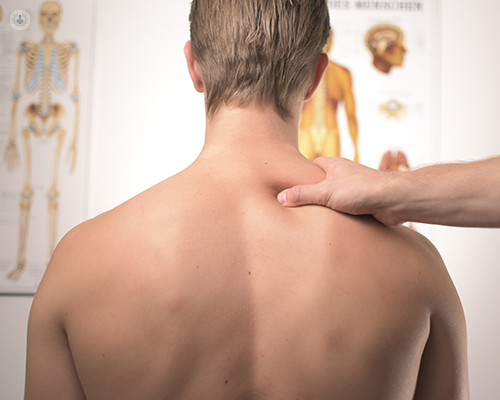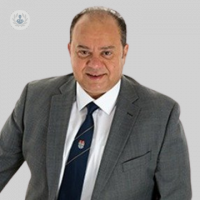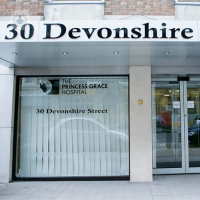Rhizotomy
Dr Yasser Mehrez - Pain medicine
Created on: 11-13-2012
Updated on: 05-22-2023
Edited by: Sophie Kennedy
What is a rhizotomy?
Rhizotomy (also called rhizolysis) is a non-invasive surgical technique that severs nerve roots in the spinal cord with highly localised heat generated with radiofrequency. The objective is to stop the nerves in the spine from sending pain signals to the brain. This procedure is carried out under local anaesthesia to numb the skin and with X-ray control and in some cases, sedation can be applied as long as it does not hinder the procedure.

Why might rhizotomy be performed?
A rhizotomy is used to help patients with chronic back pain, chronic neck pain and muscle spasms. A successful procedure reduces pain without reducing nerve function.
What does a rhizotomy procedure entail?
Rhizotomy consists of the destruction of nerve endings that transmit pain from the joints that join two vertebrae together. This is done via radiofrequency impulses which are applied through a needle that is focused on the specific nerve and under x-ray control. Once the needle is in the correct position, a series of tests are carried out to locate the nerve that causes the pain.
The patient might feel a tingling sensation during the procedure. The specialist will regularly check-in with the patient and consult with them about how the procedure is affecting them. If the needle is in the vicinity of the main nerve roots, there can be trembling in the legs.
Preparation for rhizotomy
As part of the usual care before a procedure, the area will be sterilised and a review of the amount of anaesthesia required will be performed.
Aftercare
After the procedure, the patient should rest for thirty to sixty minutes and can return home a few hours later. The doctor will recommend rest during the remainder of the day of the procedure and avoiding activities that involve physical effort over the following few days. If you receive sedation, you will need someone to drive you home after the procedure.
You may notice some type of pain or numbness in the area where the treatment has been applied, which will be short-lived. In rare cases, the pain you felt before the procedure may worsen but pain relief medication and applying a cold or hot compress can be used to relieve discomfort.
The result may take two to three weeks to show. If the pain returns, the procedure can be performed again or another treatment may be attempted.




